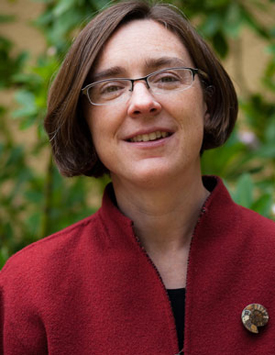National study of scientist-educators reveals surprises in training, funding
SF State researcher publishes findings in PNAS
SAN FRANCISCO -- The first large-scale study of U.S. science faculty with education specialties (SFES) concludes that their training and funding vary considerably depending on their college or university.
In a study published in the April 15 issue of the Proceedings of the National Academy of Sciences, a team of researchers including SF State biology professor Kimberly Tanner conclude that researchers at master’s degree-granting institutions are almost twice as likely to have formal training in science education than their colleagues at other institutions.

Associate Professor of Biology Kimberly Tanner
But surprisingly, these faculty at Ph.D.-granting institutions are much more likely to have received grant money for science education projects, Tanner and colleagues found.
SFES are a widespread and growing group, whose numbers have increased as science departments recognize the need to apply their own analytical skills to discover ways to improve their own teaching and learning, Tanner said.
Many SFES originally trained as scientists, but the focus of their studies has shifted to science education, including strengthening undergraduate and K-12 science education programs. “They’re often doing research on trying to understand how people learn and comprehend the ideas in their science, whether it be biology or physics or another science discipline,” said Tanner, who also serves as the director at the University’s Science Education Partnership and Assessment Laboratory (SEPAL).
The PNAS paper is a follow-up to a study published in the journal Science in 2008, which explored the characteristics and training of science faculty with education specialties in the California State University system.
The new study included 289 SFES faculty members from 45 states, Washington, D.C. and Puerto Rico, with the overwhelming number of faculty -- 94 percent -- trained as basic science researchers. Only 43 percent of them had formal training in science education, such as a master’s or Ph.D. degree or graduate fellowship in science education, or a K-12 teaching credential.
Tanner said there is a longer history of SFES in physics and chemistry departments, compared to biology departments, so the researcher team expected to see more pronounced differences in SFES between disciplines in their study.
But Tanner and colleagues instead found that the striking differences among these faculty members stemmed more from where they worked than from their basic science disciplines.
For instance, it was Ph.D.-granting universities and colleges that had the lowest proportion of tenure-track SFES, compared to Master’s degree-granting institutions and those that offered primarily undergraduate degrees.
Despite this discrepancy, and the fact that fewer SFES at Ph.D.-granting institutions had formal science education training, more of these researchers were getting science education grant money.
Tanner called this an “intriguing disconnect” that isn’t fully understood. “One of the main pieces of advice that SFES in this study would give to upcoming SFES would be to get training especially in science education...and yet what our study shows is that it’s perhaps not yet providing an advantage in grant competitions.”
It may be that SFES at Ph.D.-granting institutions are more likely to get science education grants on their personal or departmental reputation in the basic sciences, she suggested.
There is still a “tension point between trying to integrate issues of social science—which is what science education and teaching and learning is—into traditional science departments,” Tanner noted. “I think this disconnect between training and funding may be an indicator of that tension point.”
“I think it’s concerning in any field if the people who are getting more training are not necessarily having greater success in funding,” she added, “especially in a nascent field like this.”
SF State is the only master's-level public university serving the counties of San Francisco, San Mateo and Marin. The University enrolls nearly 30,000 students each year and offers nationally acclaimed programs in a range of fields -- from creative writing, cinema and biology to history, broadcast and electronic communication arts, theatre arts and ethnic studies. The University’s more than 212,000 graduates have contributed to the economic, cultural and civic fabric of San Francisco and beyond.
###
Kimberly Tanner may be contacted directly at kdtanner@sfsu.edu.
To receive a copy of the paper, reporters may contact pubcom@sfsu.edu or call 415-338-1665.